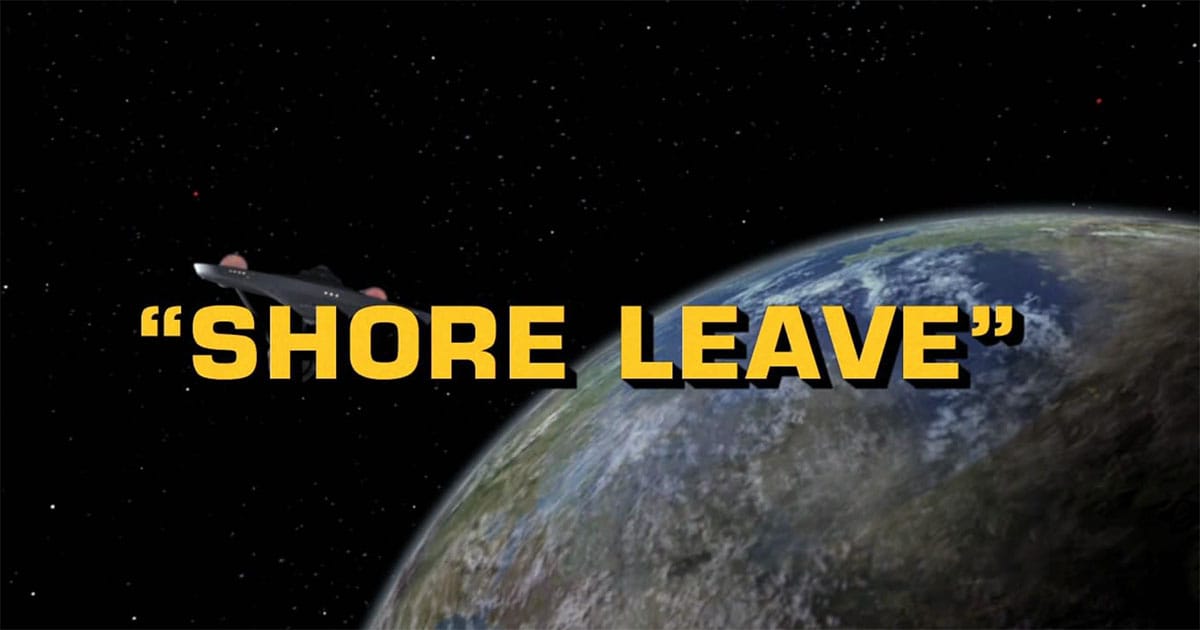The Original ‘Holodeck’ Before the Holodeck
Captain Kirk’s 1966 adventure “Shore Leave” introduced the holodeck idea decades before TNG. This look back at Star Trek’s hidden innovation shows how imagination shaped science fiction’s future.

When we talk about the holodeck in science fiction — the immersive simulated world generator that lets characters step into fantasy, history, or pure imagination — most fans point to Star Trek: The Next Generation ("TNG") as the origin. But a closer look at Star Trek: The Original Series ("TOS") shows that the idea had already been planted long before.
A world of make-believe

In the TOS Season 1 episode "Shore Leave", broadcast March 29, 1966, Captain Kirk and crew take a getaway on an alien planet where their imaginations are made real. The landscape shifts as they explore; objects materialize; fantasies and fears merge. The episode plays like the primitive precursor of the holodeck.
While TNG's "holodeck" term did not appear until Season 2 episode "The Schizoid Man" (1989), the core concept — simulated environment reacting to characters' thoughts — is embedded in this earlier send-up. TOS didn't call it a holodeck, but it certainly was one.
Why it matters now
Fast-forward to today, and the simulacrum device is everywhere — from recreated worlds in film and VR games to the cultural memory of fans. The upcoming season of Star Trek: Strange New Worlds has reportedly teased a holodeck-style sequence, which makes revisiting Shore Leave timely. Amid fresh audience interest, the TOS episode resurfaces as the unsung origin of the trope.
That freshness — the resurgence of interest around Strange New Worlds, the wider Trek fandom's nostalgia — is the kind of hook that lifts content into broader visibility. Discover-friendly content often behaves like this: old subject + current spark = renewed relevance.
The scenes that point the way
- When Kirk steps into a clearing and suddenly flowers bloom from thin air, the show is already demonstrating the concept of an interactive environment.
- The "paintings that come alive" segment signals world-building beyond standard planet-encounter tropes.
- The moment when fantasy self-confrontation takes place — that is, simulation as a psychological mirror — prefigures the sorts of holodeck episodes in which characters face personal demons within an artificial environment.
What the holodeck built on this legacy
TNG, Star Trek: Deep Space Nine, and later Trek iterations refined the idea into a recurring plot device. But they stood on creative soil turned by TOS. A few examples:
- TNG's "The Big Goodbye" (S1) introduces the formal holodeck facility, yet the emotional stakes and immersion echo Shore Leave's conceit.
- DS9 uses the holosuite concept for genre mash-ups and character exploration — again, rooted in simulation for inner story as much as outer spectacle.
- In fandom commentary, you'll find quotes pointing to Shore Leave as the first "virtual fantasy planet" that Trek ever showed.
The takeaway
Shore Leave wasn't billed as a holodeck episode — it was simply another TOS adventure. But in retrospect, it laid the conceptual groundwork. When future shows asked "What if we could build any world we wanted, in minutes?", they inherited that seed.
So next time someone quizzes you on the first holodeck, don't start with TNG. Instead, say: "It began with Kirk and a day off on a fantasy planet in 1966."

